Description
The Blue Cheek Goby, Valenciennea strigata, also known as Blue Streak Sleeper Goby, is a small and visually striking fish with a maximum size of approximately 4 inches (10 cm). This species displays a slender body with a pale background colouration and distinct blue markings on its cheeks.
Natural Habitat
The Blue Cheek Goby inhabits sandy areas within the Indo-Pacific region. It prefers areas with clear water and abundant coral growth. Their natural habitat consists of coastal reefs, lagoons, and seagrass beds. These gobies are often found near the edges of coral reefs or sandy patches with coral rubble.
Keeping Blue Cheek Gobies Healthy:
Keeping Blue Cheek Gobies healthy requires moderate care and attention. They are relatively hardy fish but can be sensitive to sudden changes in water parameters. It is important to maintain stable water conditions with a temperature range of 78-82°F (25-28°C) and a pH range of 8.1-8.4. Providing a sandy substrate mimicking their natural environment is crucial for their well-being.
Special Requirements and Feeding
Blue Cheek Gobies have a unique feeding behaviour as they are known as sand-sifting gobies. They sift through the sand bed in search of tiny organisms and organic matter. It is essential to provide a sufficient sand bed in the aquarium for them to display this natural behaviour. In terms of feeding, they will also accept a variety of high-quality frozen and live foods, including brine shrimp, mysis shrimp, and small crustaceans.
How Many Should I Keep?
Blue Cheek Gobies are generally peaceful fish and can be kept singly or in small groups. However, it is recommended to provide ample space and resources for each goby to establish its territory. A general guideline is to provide at least 10 gallons (38 litres) of water volume per goby to ensure they have enough space to thrive.
Lighting Preference
Blue Cheek Gobies do not have specific lighting preferences. They can adapt well to a range of lighting conditions commonly found in marine aquariums.
Suitable Tank Mates
Blue Cheek Gobies are generally compatible with a variety of reef-safe fish and invertebrates. They are peaceful and should be kept with non-aggressive tank mates of similar size. Good tank mates include small to medium-sized peaceful fish, small gobies, small wrasses, and peaceful invertebrates such as shrimp and snails. Avoid housing them with larger and aggressive fish that may intimidate or harm them.
Sand Sifting
The Blue Cheek Goby, like other sand sifting gobies, feeds by sifting through the sand bed in search of tiny organisms and organic matter. It uses its specialized mouth to take in mouthfuls of sand and then expels the sand particles, keeping the edible food items. This unique feeding behaviour serves a vital purpose in aquariums as it helps to aerate the substrate and prevent the buildup of detritus. By consuming small organisms and organic waste, the Blue Cheek Goby contributes to maintaining the cleanliness and overall health of the aquarium environment.
Reproduction in the Wild
In the wild, Blue Cheek Gobies reproduce through a process known as spawning. During the breeding season, male gobies create and defend territories where they attract and court females. Courtship rituals involve intricate displays and movements to impress the females. Once courtship is successful, spawning occurs, with the female releasing her eggs into the water column. The male then fertilizes the eggs externally. The fertilized eggs are left to float and develop in the water until they hatch into larvae.
Breeding Valenciennea strigata:
- Set Up:
To breed Blue Cheek Gobies, a separate breeding tank is typically set up. The tank should have appropriate water conditions and parameters similar to their natural habitat, including a sandy substrate and suitable hiding places.
- Courtship/Spawning:
The male Blue Cheek Goby will establish a territory and display courtship behaviours to attract a female. The courtship ritual includes fin displays, zigzag swimming patterns, and other visual cues to impress the female.
- Rearing:
After successful spawning, the eggs will float in the water column. At this point, it is ideal to remove the eggs from the main tank to a separate hatching or rearing tank. The eggs will hatch into larvae, which require specific conditions, such as appropriate water flow and the provision of suitable food for their growth and development.
Sexual Dimorphism
Sexual dimorphism in Blue Cheek Gobies is not prominent. However, males may exhibit slightly more vibrant colours, especially during courtship displays, compared to females. Otherwise, males and females generally share similar physical characteristics.
Distribution
The Blue Cheek Goby, Valenciennea strigata, is a naturally occurring species in the Indo-Pacific region. It can be found in various locations such as the Red Sea, Indian Ocean, and Western Pacific. While there may be captive-bred and line-bred strains available in the aquarium trade, the original wild fish typically comes from these regions.
Summary
The Blue Cheek Goby AKA Blue Streak Goby, (Valenciennea strigata) is a captivating fish with its distinct appearance and sand-sifting behaviour. It contributes to the cleanliness of the aquarium by feeding on small organisms and organic waste within the sand bed. In the wild, they reproduce through spawning, with the males engaging in courtship rituals to attract females. Breeding Blue Cheek Gobies in captivity involves setting up a separate tank and providing suitable conditions for successful courtship, spawning, and larval rearing. While sexual dimorphism is not significant, males may display more vibrant colours during courtship displays. The Blue Cheek Goby is native to the Indo-Pacific region, and while there may be captive-bred strains available, the wild fish originates from areas such as the Red Sea, Indian Ocean, and Western Pacific.
The Fish pictured here are representative only and the livestock you receive may vary in pattern, coloration, and shape.

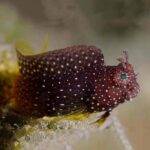
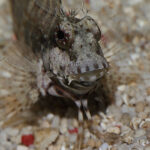
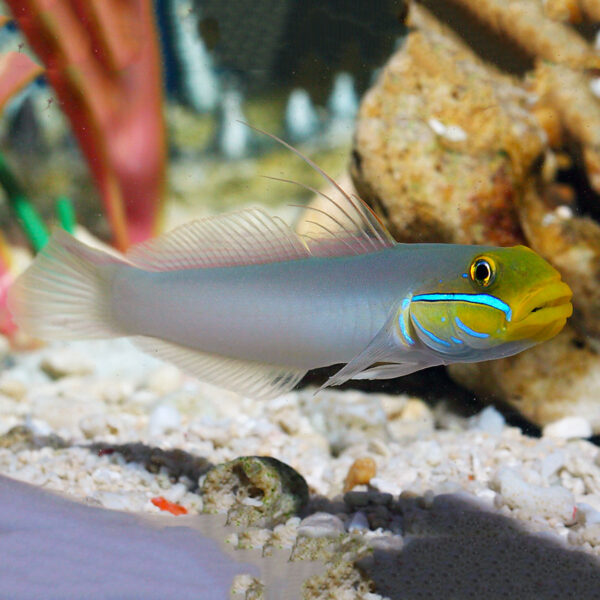
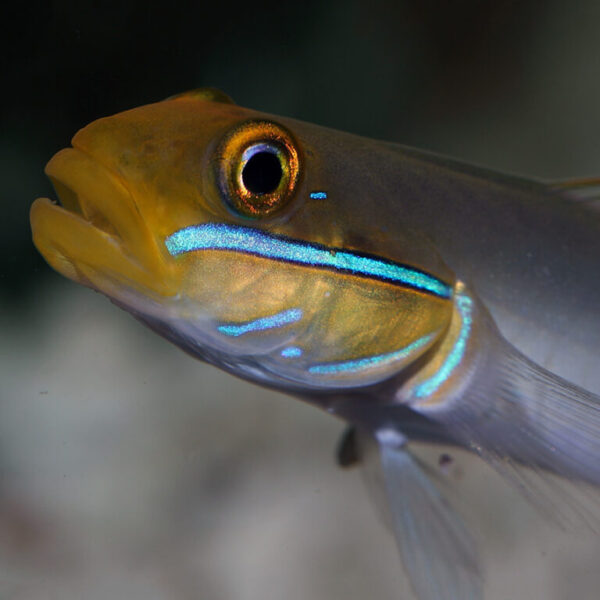

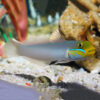

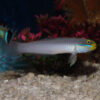

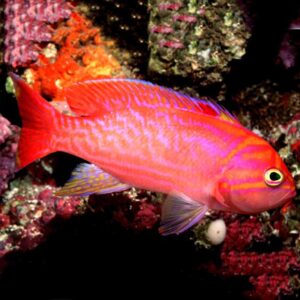
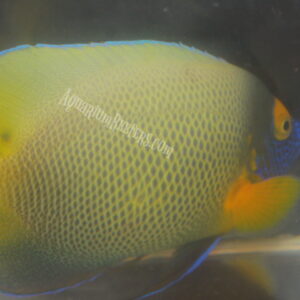

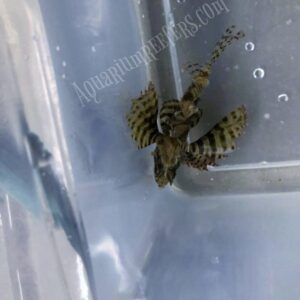
Reviews
There are no reviews yet.